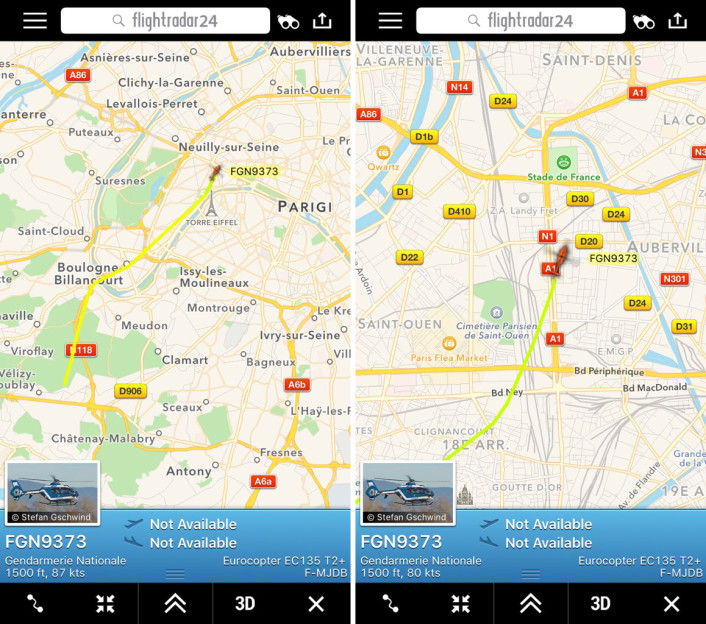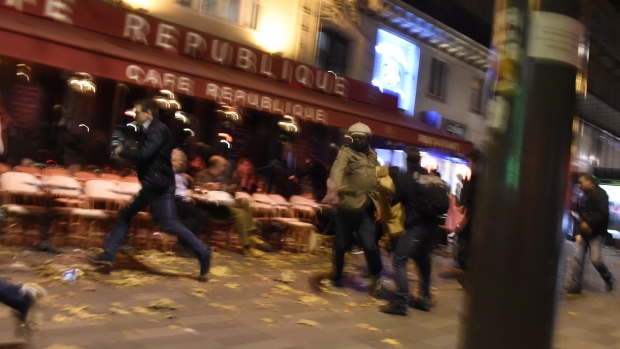After little more than 24 hours from the Friday night’s terror attacks in Paris let’s have a look at the known and unknown facts.
On Friday Nov. 13, starting at 21.20 local time (GMT +1), a series of coordinated terrorist attack hit Paris and its northern suburb Saint-Denis, France. The attacks, consisting of suicide bombs, mass shootings and hostage taking, and killed 129 and injured 352 people (at the time of writing), less than one year since the Charlie Hebdo attack.
Timeline
According to the timeline provided by French prosecutor Francois Molins at a news conference on Saturday and reported by Reuters, it all started with an explosive belt detonated by a suicide bomber near a gate of the Stade de France stadium where France President Francois Hollande was watching a friendly soccer match between France and Germany. The attacker and a passer-by were killed.
At 21.25, gunmen shot at clients sitting on the terraces of the “Le Carillon” bar and the “Petit Cambodge” restaurant, killing 15 and severely injuring 10. Five minutes later, at 21.30, a second suicide bomber detonated a bomb outside Stade de France, killing himself. It looks like that at least one of the suicide bombers had a ticket for the match but was denied entry to the stadium.
At 21.32 gunmen opened fire in front of a bar killing five people and severely injuring eight whilst four minutes later, gunmen killed 19 people sitting on the terrace of the restaurant “La Belle Equipe” in a nearby street killing 9 people and injuring several more.
Around 21.40 a suicide bomber killed himself inside a restaurant in the 11th district, injuring one person severely. More or less at the same time, several gunmen intruded the nearby Bataclan concert hall during a concert of the U.S. rock group “Eagles of Death Metal” and started shooting randomly at the crowd killing 89 people and injuring several more, while shouting references to Iraq and Syria.
At 21.53 a third bomb is detonated by a suicide bomber near the Stade de France.
At 23.30 one EC-135 helicopter of the French Gendarmerie Nationale (Police) could be tracked as it flew over the Stade de France and over the locations of the terrorists attacks on Flightradar24.com. This is the only known aerial asset launched in the aftermath of the attacks.

At 00.20 on Saturday, Nov. 14, French Security forces make a blitz inside the Bataclan to free those kept hostages in the concert hall: 1 terrorist is killed and two commit suicide by detonating their explosive belts.
Unanswered questions
In an interesting article published on the Corriere della Sera website, journalist Guido Olimpio, a terror, smugglers and Middle East expert based in Washington DC, summarized all the unanswered questions about the Paris attacks.
- How many terrorists took part in the coordinated attacks? ISIS claimed responsibility for the attack and mentioned a team of 8 militants. French prosecutor said 7 terrorists were killed.
- Is a bomb-maker still on the loose? Who did assemble the explosive belts? Were these assembled by the kamikaze killers themselves?
- Who has helped the terrorists? The militants had munitions, explosive and weapons. Did they pre-positioned all what they needed close to their targets? What logistic network helped them?
- Where did the terrorist train? Were they veterans of the Middle East conflicts or did they prepare for the attack at their home? As Olimpio notices, they knew how to move and shoot. Some sources say they were veterans of the war in Syria. A passport seems to point to a Syrian refugee who arrived in Greece last month
- Are there links with other teams based in other European countries? Three people have been arrested in Belgium, one in Germany. Is there a European terrorist network?
- Why did the intelligence fail to detect the imminent attack? It was a large attack. In some ways it was also expected. Although it is impossible to monitor all the potential terrorists, one of the attackers had been identified as a fighter coming back from Syria to commit terrorist acts.
- Was something else planned? According to Olimpio, the IS document released on the Web in the aftermath of the attack mentions the 18th arrondissement (district) among the locations hit by the attackers. But nothing happened there. Is this an error? Did the terrorist miss one of their targets?
Top image credit: Dominique Faget/AFP/Getty via CBC Radio One




















